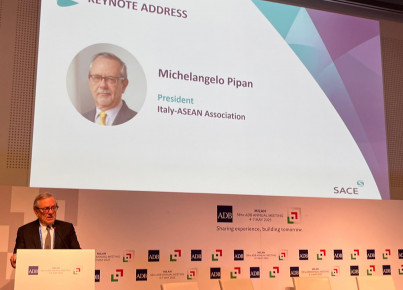In recent years, bilateral trade and direct investment have increased exponentially, thanks in part to the HLD. Now there is room for further growth
Economic relations between Italy and ASEAN are continuously deepening. The High Level DIalogue on ASEAN Italy Economic Relations 2024, which took place on November 5 and 6 in Manila, was an opportunity to highlight the current state of relations and discuss how to further strengthen them. As shown in the position paper published by The European House Ambrosetti at the event, the ASEAN-Italy trade interchange is worth more than $20 billion, of which $9.7 billion is represented by Italian exports to ASEAN and $12 billion refers to ASEAN exports to Italy. In the past six years, the total trade interchange between Italy and ASEAN has grown by 38 percent, more than the United Kingdom, Germany and France, highlighting the great dynamism of Italy-ASEAN economic relations.
The instruments of economic cooperation between ASEAN and Italy are diverse and multifaceted. They include trade agreements, investment treaties, joint ventures and economic and technical cooperation programs. These instruments aim to reduce trade barriers, promote investment, foster technology transfer and strengthen economic ties between the two regions. Together, they build resilient and mutually beneficial economic partnerships. To date, Italian FDI in ASEAN is worth 7.7 billion euros, while ASEAN FDI amounts to more than 800 million euros. These are exponential increases since the HLD editions began and since the Italy-ASEAN Association was founded.
As Lorenzo Tavazzi, Senior Partner and Board Member of The European House Ambrosetti, points out in his position paper, the concrete results achieved in recent years are remarkable. A few examples? The opening of production units, design and service centers in Vietnam, Thailand and Indonesia by an Italian company operating in the metallurgical sector; the opening of a production plant by 2 Italian motorcycle manufacturers in Thailand and Indonesia; the inauguration of a new tire production plant in Thailand; the acquisition of a minority stake in an Italian cosmetics manufacturer by a sovereign wealth fund owned by the Singapore government; the increase in exports of Made in Italy products to ASEAN, particularly to Singapore, Malaysia, Thailand and Vietnam; and the introduction of training and business courses for access to the ASEAN market offered by Italian government agencies.
There is enormous potential for growth in some areas. For example on digital. ASEAN today has different levels of digital and environmental preparedness and is prioritizing green growth and technology adoption, with the goal of improving regional competitiveness, especially through the deployment of artificial intelligence, a robust startup ecosystem, and 5G infrastructure. Italy, with its strong industrial base and advanced technologies, is focusing on clean energy, sustainable practices and digitization to boost economic growth and resilience and can help increase ASEAN competitiveness. As ASEAN countries continue to prioritize resilience and innovation, high-tech sectors such as space offer critical support to ensure business continuity, regional stability, and cooperation in a highly strategic sector. Italy, renowned for its expertise in advanced technology and research, has much to contribute to ASEAN's growth in these areas. The potential for joint projects, technology transfer and knowledge sharing is significant and offers both regions unique advantages of collaboration. Not surprisingly, just in the past few weeks the ASEAN-Italy Cooperation Initiative on Space and Smart Technologies project was concluded with an event at the headquarters of the Italian Space Agency (ASI) in Rome. The initiative, financed by the Ministry of Foreign Affairs and International Cooperation, Directorate General for Globalization and Global Issues, is part of the formal framework of the partnership stipulated between MAECI and the ASEAN Secretariat and called ASEAN-Italy Development Partnership (2022-2026). And it aims among other things to create business opportunities, increase international presence, and improve scientific knowledge based on shared experiences, best practices and lessons learned.






